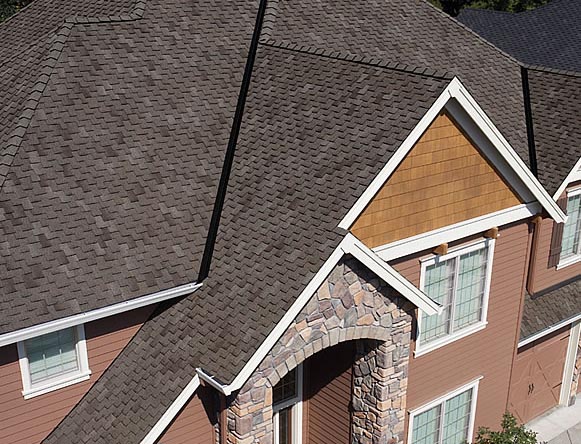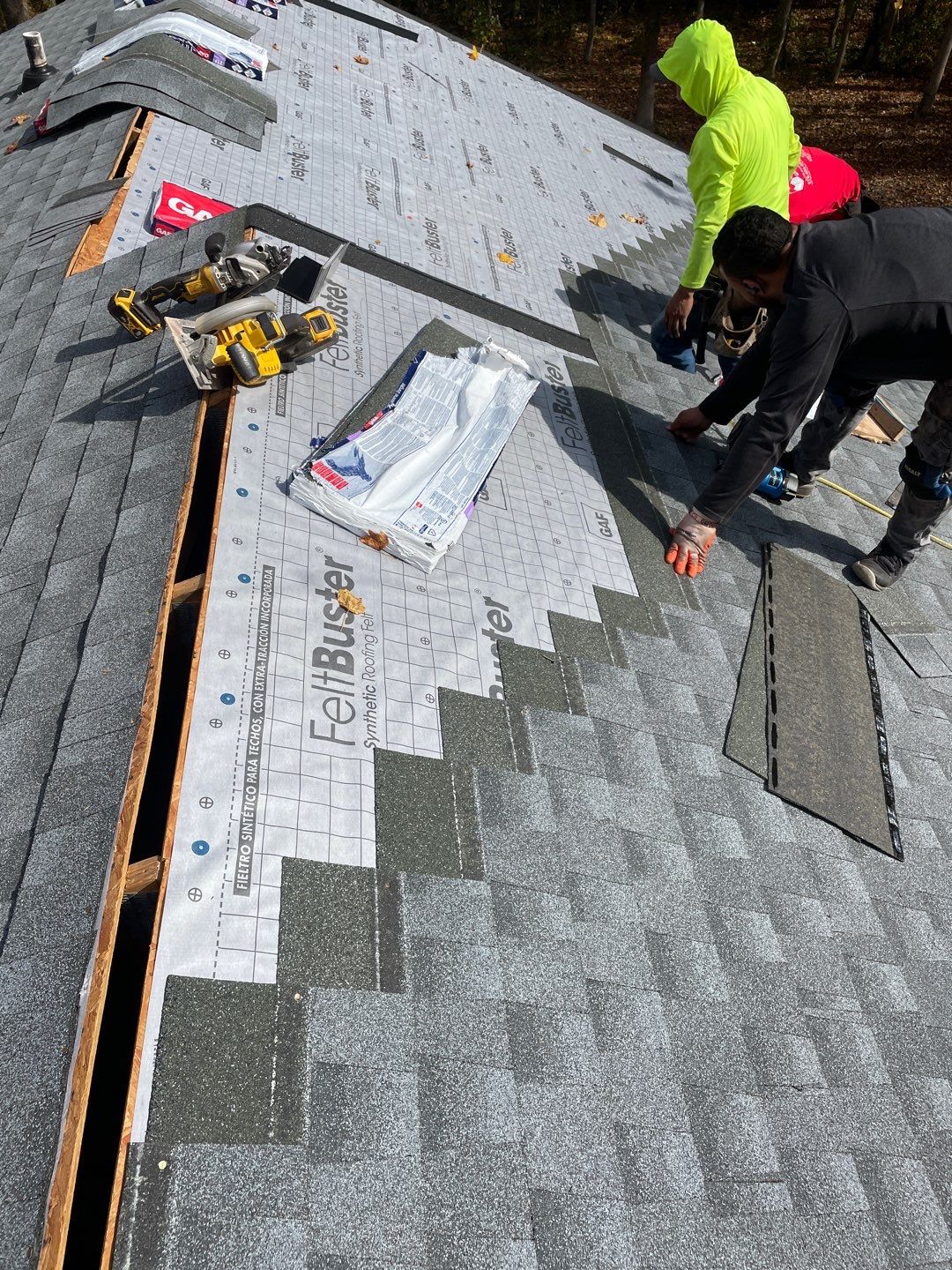The Advantages of Collaborating With Gainesville FL Roofing Companies
Best Practices for Ensuring Correct Roofing Ventilation
A balanced consumption and exhaust air vent proportion, typically 1:300, plays a pivotal duty, with consumption vents preferably placed at the reduced side of the roof for amazing air entrance and exhaust vents at the top for cozy air departure. Maintaining insulation away from vents is important to avoid air movement constraint.
Understand Ventilation Essentials
Properly recognizing ventilation basics is vital for making certain the long life and effectiveness of roof. Reliable ventilation minimizes wetness build-up and temperature level extremes in the attic, both of which can lead to substantial architectural damage in time. A well-ventilated roofing assists in avoiding common concerns such as mold development, timber rot, and ice dams, which can compromise the honesty of the roof products and the underlying frameworks.
The main goal of ventilation is to assist in the movement of air, permitting a regular exchange in between the exterior and interior environments. This equilibrium is attained via a combination of intake and exhaust vents that collaborate to maintain ideal air movement. Intake vents, commonly situated along the eaves or soffits, permit fresh air to go into the attic room, while exhaust vents, usually positioned at or near the roofing ridge, enable warm, moist air to run away.
Trick elements influencing the effectiveness of roof ventilation include proper positioning, appropriate sizing, and making sure that both intake and exhaust vents are unobstructed. Routine evaluation and upkeep are important to recognize potential blockages, damages, or inefficiencies in the air flow system, thereby protecting the roofing's performance and resilience.
Sorts Of Roofing System Vents
Roofing system vents play an essential function in maintaining effective attic room air flow and, by expansion, the overall health and wellness of the roof system. Numerous types of roof covering vents are readily available, each with distinct benefits customized to specific roof covering needs.

Soffit vents are installed under the eaves and work in tandem with roofing vents to ensure a balanced intake and exhaust system. By permitting cooler air to go into from below, soffit vents promote the expulsion of warm air through upper vents. Gable vents, situated on the outside wall surfaces of the attic, offer another reliable solution, specifically in homes with gable roofs.
Assess Your Present Air Flow

Next, take reference into consideration the age and problem of your roof covering materials and air flow components. Older systems might not abide by current building codes or might have deteriorated gradually, lowering their efficiency. Conduct a comprehensive assessment to determine any type of indicators of wear and tear, such as corrosion, damages, or voids that could compromise the system's performance.
Furthermore, measure the attic temperature and humidity degrees. High temperature levels and moisture can suggest inadequate ventilation.
Setup Best Practices
Reliable installment of roof ventilation systems is vital for ensuring optimal performance and long life. Proper installment starts with understanding the certain air flow needs of the building and the roofing system it covers. This entails determining the appropriate ratio of intake to exhaust vents, normally sticking to the 1:300 rule, which stipulates one square foot of ventilation for each 300 square feet of attic room flooring area.

Intake vents ought to be installed at the roof covering's reduced side, typically in the soffits, to enable amazing air to go into. Exhaust vents, on the other hand, must be mounted near or at the roof's height to promote the exit of warm, damp air.
Seal all air vent links meticulously to stop air leaks and potential water infiltration. Use high-grade materials and follow maker guidelines to make sure longevity and effectiveness. In addition, incorporating ridge vents with baffles can considerably boost air flow performance by avoiding wind-driven rain and snow from going into the attic room.
Eventually, accurate setup of roof covering air flow systems alleviates prospective issues such as mold and mildew development, ice dams, and structural damages, making certain the roof's integrity and the building's total wellness.
Normal Upkeep Tips
Consistency in maintenance practices is basic to guaranteeing the long-term performance of roof ventilation systems. Throughout these examinations, make certain that vents are cost-free of particles, nests, and other obstructions that could restrain airflow.
Utilize a soft brush or a vacuum cleaner to eliminate dirt and debris from intake and exhaust vents. Be mindful not to harm the vent screens or louvers during the process.
Appropriate insulation is just as essential. Make certain that attic room insulation does not obstruct the vents, as visit site this can significantly limit air movement. If any kind of insulation has moved or cleared up, reposition or replace it to maintain an efficient obstacle.
Finally, replace any type of damaged or missing out on components promptly. Broken vents, split roof shingles, or tatty blinking can all add to poor air flow and needs to be attended to immediately. Normal upkeep ensures that the roof covering air flow system operates ideally, thereby prolonging the life-span of the roof see page covering itself.
Final Thought
Making sure proper roof ventilation is critical for keeping the efficiency and durability of a roof. Adherence to the 1:300 consumption and exhaust vent proportion, combined with the strategic placement of vents, is necessary. Routine biannual examinations, debris cleansing, and guaranteeing insulation does not obstruct air movement are important techniques. Carrying out these best techniques will cultivate a well-ventilated roof, thereby mitigating potential problems related to moisture build-up and excessive heat, eventually lengthening the roofing's life expectancy.
A balanced consumption and exhaust air vent ratio, typically 1:300, plays a crucial role, with consumption vents ideally put at the reduced side of the roofing system for cool air access and exhaust vents at the top for warm air exit. Consumption vents, generally located along the soffits or eaves, permit fresh air to get in the attic space, while exhaust vents, frequently located at or near the roof ridge, enable warm, damp air to run away.
Soffit vents are installed under the eaves and work in tandem with roofing vents to guarantee a balanced consumption and exhaust system. By permitting cooler air to get in from below, soffit vents help with the expulsion of warm air with top vents. Adherence to the 1:300 intake and exhaust vent ratio, combined with the tactical positioning of vents, is essential.